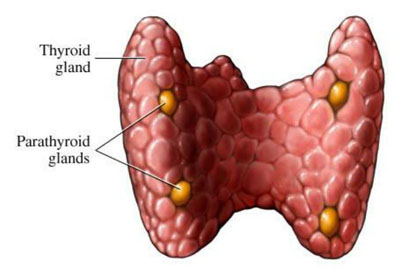Parathyroid

What and where are the Parathyroid Glands?
The parathyroid glands are small, oval-shaped glands, the size of a lentil. They are located behind the thyroid gland posteriorly in the neck. Their position is very variable. Parathyroid glands produce parathyroid hormone ( PTH), which plays a key role in the regulation of calcium levels in the blood. Normally, the glands release just enough PTH to keep calcium levels normal. Disease can upset this balance.
Parathyroid Surgery
Parathyroid surgery is indicated when a patient develops Hyperparathyroidism.
Hyperparathyroidism is a condition in which one or more of your parathyroid glands become overactive and release (secrete) too much parathyroid hormone (PTH). This causes the levels of calcium in your blood to rise. (hypercalcaemia),
Left untreated, high levels of calcium in the blood can lead to a range of problems.
The most common symptoms are:
- fatigue
- depression
- memory loss
- bone aches and loss of bone density
- kidney stones and deterioration of kidney function
The commonest reason for this overproduction is a single benign adenoma. Less commonly it is gland hyperplasia (enlargement of all the glands), or very rarely a carcinoma.
The mainstay of treatment for this disease is the surgical removal of the faulty gland or glands.
The workup for parathyroid surgery involves a special type of CT to try to assess which gland is causing the issue and to minimise the extent of surgical exploration.
Ros will organise this through Pacific Radiology.